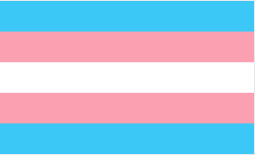
This blog post is part of the Informed K12 Diversity and Inclusion event and initiative series. We take our commitment to Diversity and Inclusion very seriously and want to make sure that we are gathering feedback from our Diversity and Inclusion Council on all our blog posts. Because of this, blogs may be posted a while past the date of the initial event or announcement of the initiative.
Transgender Day of Remembrance “was started in 1999 by transgender advocate Gwendolyn Ann Smith as a vigil to honor the memory of Rita Hester, a transgender woman who was killed in 1998. The vigil commemorated all the transgender people lost to violence since Rita Hester's death, and began an important tradition that has become the annual Transgender Day of Remembrance.”1 Last year at Informed K12, we commemorated this important holiday with an educational presentation about gender, sex, and transgender identity.
We took this time as a team to establish a shared framework and language for understanding gender identity and expression at work. Some of our key takeaways from this session:
- Sex and gender are not binary systems, but rather diverse spectra of identities2
- Gender expression is the outward presentation of a person’s gender, but is not determined by assigned sex at birth or gender identity3
- The deep important of using respectful terms for transgender and gender non-conforming people in the workplace and our communities
People First is one of the central values at Informed K12, and part of that value is ensuring that we build teams that reflect the diversity of our district partners. More importantly, we have to ensure that when we bring in folks from different backgrounds, they are treated with respect. These conversations are even more critical at a time when transgender youth are being disproportionately targeted with legislation all around the country.4
This discussion set the stage for us to live out our ongoing commitment to educating our colleagues and ourselves about the rich diversity of the communities we live in and serve.
Footnotes:
- https://www.glaad.org/tdor
- https://blogs.scientificamerican.com/voices/stop-using-phony-science-to-justify-transphobia/
- A Guide to Understanding Gender Identity and Pronouns : NPR
- https://www.nbcnews.com/nbc-out/out-politics-and-policy/least-7-states-proposed-anti-trans-bills-first-week-2022-rcna11205